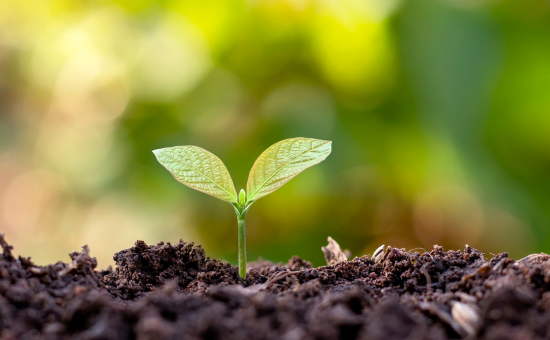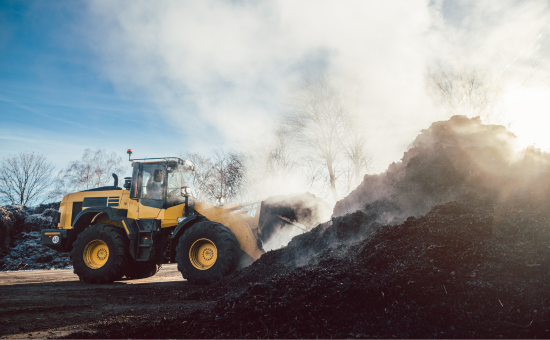From Waste to Action: How Saving Food Can Save You Money
Written by: Alexandra Cuschieri, Zero Waste Campaign Coordinator.
In Canada, the average household throws away around $1,300 worth of edible food every year. That’s like throwing away a full bag of groceries every single week. In today’s economy, that’s not just wasteful—it’s a luxury most of us can’t afford.
And the impact of food waste goes far beyond our finances. Growing, transporting, and storing food takes water, land, energy, and time. When we waste it, we’re wasting all of those resources too. And when food ends up in landfill, it releases methane, a powerful greenhouse gas that contributes to climate change.
A culture of waste
So how did we get here? Somewhere along the way, wasting food became surprisingly… normal. Our food system makes it easy. Food is abundant, relatively cheap, and often treated as disposable. We’re encouraged to buy more, choose the best-looking produce, and take best-before dates as hard rules, even when the food is perfectly fine.
The result? Nearly half of all food in Canada never gets eaten. Right here in Whistler, one-fifth of household food waste is avoidable—good food that could have been enjoyed but ended up in the bin.
The good news is, many households already know how to make their food stretch. But let’s be honest: most of us could still do better.
Why should we care?
Because when we waste food, we’re not just throwing away dinner, we’re contributing to a bigger problem. When we ignore our role in food waste, we make it seem normal. And when millions of us do that, it adds up to a global crisis.
We need to start talking about it. We’re quietly buying more than we need, and tossing what becomes inconvenient: too wrinkled, too close to the date, or simply forgotten in the fridge.
But it doesn’t have to be this way. The small habits we build now—how we shop, store, and use our food—can make a big difference. And they’ll help shape the world future generations grow up in.
Future generations are counting on us to care now, because the habits we form today will shape the world they inherit tomorrow.
So, what can we do?
By understanding a few of the most common reasons food goes to waste, we can take action to waste less, save more, and be part of the solution.
1) We misunderstand best-before dates
A major driver of household food waste is confusion over date labels. In Canada, 23% of avoidable food waste comes from people tossing food based on best-before dates.
But here’s the thing: “Best before” doesn’t mean “bad after.” These dates are about peak quality, not food safety.
What to do instead:
- Use your senses: If it looks, smells, and tastes fine, it probably is.
- Know the difference: Only items with an expiry date (like baby formula or meal replacements) are unsafe after that date.
- Trust yourself more than the label, your judgment is usually spot on.
2) We store food incorrectly
Fruits and vegetables make up 45% of the food wasted in Canada, often simply because they weren’t stored properly. Canadians throw out 2.6 MILLION potatoes every single day.
A few easy adjustments can make a big difference.
How to store smarter:
- Store your potatoes in a cool, dark, well-ventilated place—or better yet, cook, mash, and freeze them for a ready-to-go Shepherd’s Pie topping.
- Trim the stems of herbs and place them in a jar of water in the fridge, just like a bouquet.
- Store mushrooms in a paper bag to avoid them becoming slimy.
- Keep carrots submerged in water in the fridge to maintain their crispness.
- Place a paper towel in your salad containers to absorb excess moisture.
- Freeze sliced bread, and when you’re ready to use it, pop it straight into the toaster.
- Chop and freeze excess fruit for use in smoothies.
Storing food properly helps it last longer, so you get more meals for your money.
3) We don’t know what to do with leftovers
Leftovers make up 13% of Canada’s food waste, often because they don’t seem like a full meal: a half-portion of rice, a few roasted carrots, half a bowl of soup. But when we stop seeing leftovers as scraps and start seeing them as ingredients, the possibilities grow.
Get creative in the kitchen:
- Roasted vegetables can become a frittata, soup, or sandwich filling.
- Leftover rice is perfect for a stir-fry or grain bowl.
- Overripe bananas are perfect for smoothies, baking, or freezing for banana ice cream.
- Slightly stale bread can become breadcrumbs or croutons.
Try a recipe generator to find recipes using ingredients you already have! Creativity in the kitchen doesn’t have to be gourmet, it just has to be intentional.
A mindset shift
At the heart of food waste isn’t just about habits—it’s about our values.
Are we really okay with tossing out perfectly good food because it’s easier than finding a way to use it?
And are we comfortable with the environmental impact of our choices, just because we don’t see the consequences right away?
The good news is we can do better. We can plan ahead, store smarter, and get creative with what we already have. And we can start talking about it, challenging the culture that makes food waste feel normal.
Food is too valuable to throw away. In a world where so much feels out of our control, this is one thing we can change. Saving food means saving money. It means protecting the planet. It means doing right by the people, places, and systems that help bring food to our tables.



